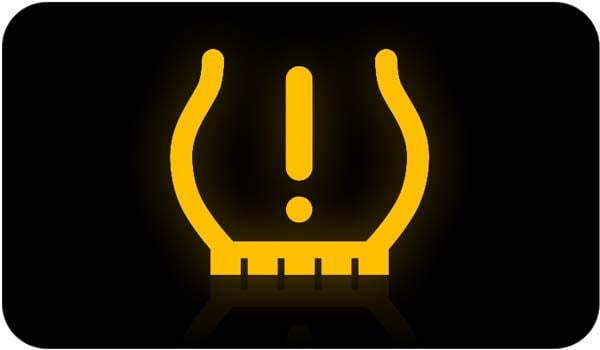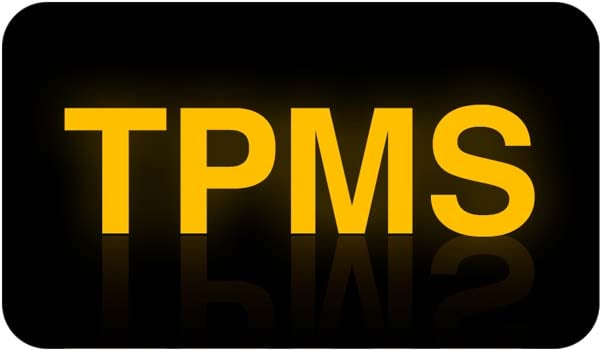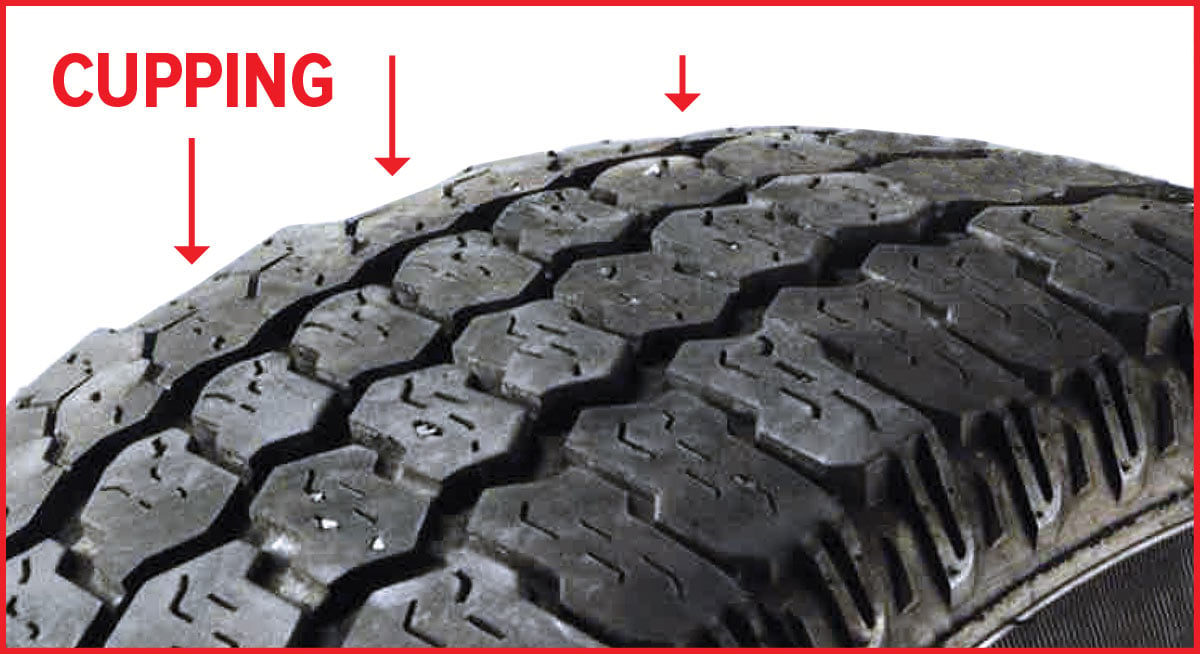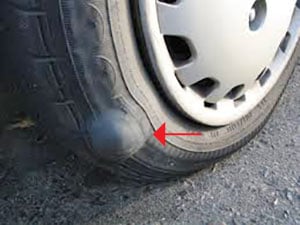-
Resetting the Tire Pressure Light on Your Car
Chances are, you’ve seen your tire pressure light come on if your vehicle has a TPMS (Tire Pressure Monitoring System). The indicator tells you when to inflate your tires or it could be alerting you to a system fault with a light on the dash. Turning that indicator off could be as easy as adjusting the air pressure in your tires, or a bit more complex. Here are some ways to reset that light and how TPMS works.
How to Reset Your Tire Pressure Light When It Comes On
First, you’ll want to check your tire pressure. Don’t forget to check each tire, even your spare. As long as your tires are properly inflated within the specified range for your vehicle, it should reset your tire pressure light.
If the light remains on after adjusting the tire to the proper PSI, you may need to repair your tire, have your TPMS inspected, or try one of the following:
- Go for a 10-minute drive. Get up to 50 MPH, if possible.
- Your vehicle may be equipped with a TPMS reset button or reset procedure in your vehicle control center. Refer to your owner’s manual or consult a professional (highly recommended).
Important note: Resetting the TPMS with a button or your vehicle control center can cause adverse affects if the pressure isn’t set to vehicle specifications.
If those options don’t work, the pros at Les Schwab know the reset procedures to get the job done. We have tools to scan each sensor and program them to your vehicle’s computer system. When your tires are properly inflated or repaired, the indicator light should turn off the next time you start your car or truck, or a few miles down the road.
Why Your Vehicle Has TPMS
TPMS was mandated to help warn drivers of low tire pressure, which can lead to poor fuel economy, sluggish vehicle handling, premature tire wear, increased stopping distances, or even tire failure. Congress passed the TREAD Act in 2000 requiring all vehicles weighing less than 10,000 pounds have tire pressure sensors. Since 2005, most new vehicles have included the system. If you see the TPMS sensor illuminate briefly when you start your car or truck, then you have the system in your vehicle.
While some TPMS use wheel speed sensors linked to your vehicle’s ABS (anti-lock braking system), a majority use small sensors mounted on the inside of each wheel (sometimes including the spare tire). These battery-operated sensors monitor the pressure in the tire and alert you when a tire’s pressure is 25% outside the manufacturer’s recommendation. If you see the tire pressure light on your dash, get to Les Schwab, where we can check the PSI, properly inflate each tire, and check for any other tire or TPMS issues.
What is the Difference Between a TPMS Light and a Tire Pressure Light?
The tire pressure light is just one part of the TPMS system. It is an indicator on your dash that lights up when your tire pressure is low. The TPMS light, available in some vehicles, may light up indicating an issue with the system.

TIRE PRESSURE LIGHT 
TPMS SYSTEM LIGHT
Can Cold Weather Cause Your Tire Pressure Light to Go On?
Every winter and summer, TPMS sensors in vehicles throughout the West come to life, telling drivers to check their air pressure. This is normal. Especially in cold weather. When the outside temperatures drop, so does your tire pressure. In the summer, the heat can increase the pressure in your tires.
By regularly checking the pressure in your tires every 30 days, you can avoid these issues. If the light illuminates on an unusually cold morning, don’t worry. It could just be the cold causing the light to come on. To be safe, get the tire pressure checked to avoid any issues. If there has not been a significant change in the weather and your tire pressure light appears, it could mean an air leak or faulty battery in one of your sensors. No matter what causes your TPMS light to turn on, come into any Les Schwab to have it checked out.
What Does It Mean If the TPMS Light Is Flashing or Illuminates
There can be many causes for a flashing TPMS light, but the most common reason could be that your system needs to be reset. Or, there could be other issues with a sensor, such as a dead battery, or the TPMS unit itself. The pros at Les Schwab can do a quick diagnostic and pinpoint the issue.
Les Schwab is Your Tire Pressure Headquarters
Proper air pressure is one of the most important parts of any tire. Pull into your local Les Schwab and we’ll check your tire pressure, add air when needed, and reset your TPMS light and get you safely back on the road.
-
How to Take Your Car Out of Winter Storage Checklist
-
Inspect wiring and hoses. Check for rodent damage, cracks and loose connections.
-
Make sure your oil level is normal. Get an oil change as soon as possible.
-
Top off air in tires and make sure the tread is intact (no bulges, cracks or balding areas).
-
Look under the vehicle for signs of fluid leaks.
-
Have brake pads and shocks examined.
-
Verify that headlights, brights, taillights and blinkers are operating.
-
Clear the exhaust pipe, if you plugged it to keep out mice.
-
Air out the interior.
Learn More -
How to Tell If Your Shocks or Struts Are Bad
It’s hard to know when to replace shocks and struts. These hard-to-inspect parts often go bad so slowly that you might not notice the reduced ride comfort and road control. Plus, there’s no set time or mileage when aging shocks or struts are due for replacement. Thankfully, there are ways to know when it might be time to get your shocks and struts checked at Les Schwab.
What Are Shocks and Struts?
Every car and truck is suspended by a combination of springs, shocks, and struts. If you look behind any of your four wheels, you’ll see these hard-working parts that move up and down, up to 1,900 times every mile. By the time you put 50,000 miles on your vehicle, your shocks and struts will have done their job 75-million times, working in tandem with your brakes, steering, suspension, tires, and your modern crash-avoidance systems to keep you in control and traveling safely on the road.
What Do Shocks and Struts Do?
Shocks and struts in good condition help your car handle bumps, debris, sudden stops, swerving, potholes, wind gusts or sharp turns. They control the side-to-side, front-to-back and up-and-down shifts of the car’s weight to keep your tires in contact with the road and you in control of your vehicle.
They also:
- Maintain your tire’s contact with the road.
- Prevent your tires and wheels from moving up and down too much.
- Contribute to stability as you accelerate, stop and turn.
- Add to ride comfort by absorbing jolts and bumpiness from irregular road surfaces.
- Help control a vehicle’s body movement (side-to-side roll, bouncing).
- Promote even wear for longer tire life.
Contrary to popular belief, shocks and struts do not typically support your vehicle’s weight or any loads your truck or vehicle might be carrying. The springs do that job. However, worn-out shocks and struts put more strain on the springs as well as other essential suspension parts. Without the control that a good shock or strut provides, these other parts get overworked, causing fatigue and premature wear.
Signs Your Shocks or Struts Are Worn
Properly working shocks and struts add to your safety on the road and help reduce damage to other parts of your vehicle. Look for these signs that indicate it might be time to get your shocks and struts checked and replaced.
Unusual tire wear (including cupping). If you spot cupping (as seen in the image below) or other unusual tire wear you may have issues with your shocks or struts, which is throwing off your alignment. This can be especially important to notice if a rotation was performed but abnormal wear is still occurring.

Cupping is uneven tire wear that looks like hollowed out areas on the tread. Rubber shock covers that are cracking, peeling or off-center. These covers can be found at the top and bottom of the shocks.
Leaking fluid. If you find clear or light brown fluid on the outside of the shocks or struts, it could indicate a broken seal.
Ride issues. If your vehicle dives when braking, bottoms out (scrapes loudly) when going over a speed bump, the rear-end squats when accelerating, or your vehicle bounces more than usual after going over a bump, it could be signs of bad shocks or struts.
Braking issues. You might notice that your vehicle takes longer to stop than usual.
Swaying. This can be especially noticeable after a turn, lane change, or in cross winds.
Unusual noises. As the shocks or struts wear, they can fail to do their job. This can cause many different sounds, including knocking and banging.
See our shock and strut service repair FAQs.
What Will Happen If I Drive on Worn or Damaged Shocks and Struts
It’s important to maintain contact with the road, especially when going over bumps or keeping up with highway traffic. Your vehicle’s suspension system, including shocks and/or struts, is great at that job when every part is working properly.
Over time, those parts will wear out. You might not even notice as it gradually degrades. When they’re not working properly, it can reduce your control and safety. It can also cause added wear to other parts of your vehicle, including your tires.
Replacing worn parts before they get bad can help keep your vehicle’s electronic systems and suspension working properly, extending your vehicle’s life — and keeping you safer on the road.
Shocks and Struts Aren’t Just About a Smooth Ride
Today’s vehicles have highly engineered electronic safety systems (vehicle stability systems, ABS (anti-lock brakes), traction control, collision prevention control and automated braking). These all work together to keep tires in proper contact with the road and provide the most stability.
When you have an unexpected hard stop or swerve, your vehicle’s crash avoidance systems send instant electronic signals to the brakes and other critical components. If ride control parts like shocks and struts are worn, they might not properly respond. Additionally, stopping distances might increase and brakes and tires could wear more quickly. Plus, there could be added strain on the springs.
How Long Do They Last (When Should I Replace Them)?
That all depends on the amount of wear and tear the shocks and struts get, the quality of roads you drive, if you haul heavy loads, and how aggressive you are behind the wheel. That’s why periodic inspections are important.
Get yours checked annually (or 12,000 miles) with every alignment, tire rotation, if you feel any ride-control issues, or anytime you buy new tires.
Les Schwab Can Help
We’re your suspension inspection experts. Our service professionals know what to look for and how to get your car or truck back to its original control and handling. Stop by or schedule an appointment today.
